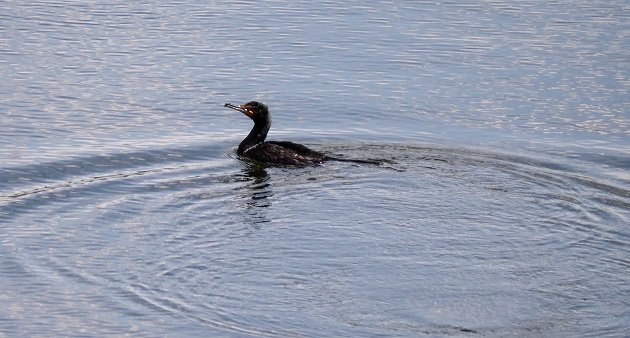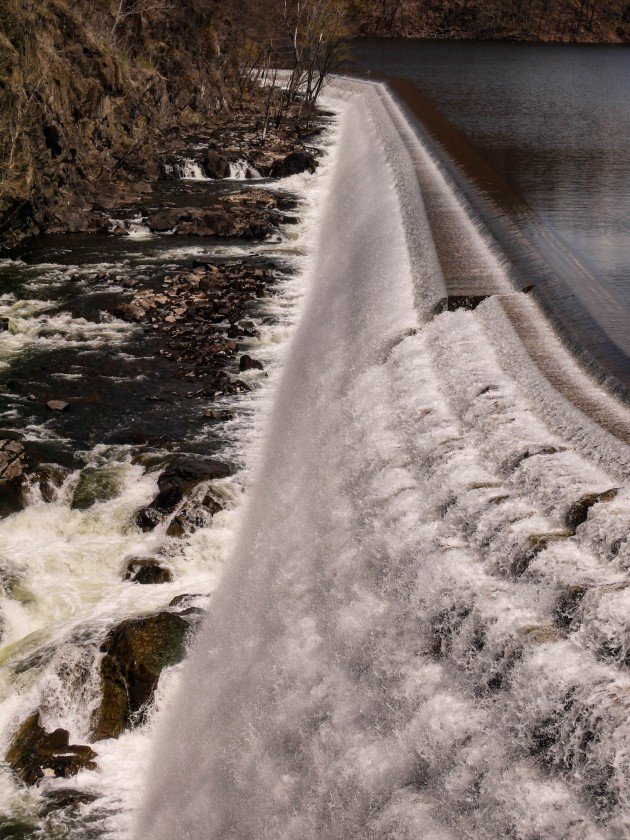
The reservoir is huge. As we stood atop New Croton Dam, the calm water stretched endlessly in front of us, reflecting the blue sky and white clouds above. Only permitted rowboats are allowed in the reservoir’s waters, and Saturday afternoon nothing stirred to break the surface. That’s what we thought anyway, until the shiny heads of half-a-dozen Double-crested Cormorants emerged from the depths.
New Croton Dam, located just outside of New York City, is an enormous feat of construction. Begun in 1892 and completed in 1906, the dam is 301 feet high and 216 feet wide at its base. Pedestrians are allowed to walk across the top, and we could peer down to see the masonry – hand cut – that has held up the dam for more than 100 years.
New Croton Dam
Though I was duly impressed by the magnitude of the dam, I was more interested in the sleek black bodies of the cormorants as they fished precariously close to the edge. At New Croton, the water spills directly over the side of the giant stone structure, and yet the cormorants swam less than a few feet from the precipice! They didn’t seem to mind the danger, and as they slowly slid towards the dam’s waterfall they easily ducked under the water and emerged a dozen or so feet away, safe once more. All were not so lucky however; we saw one cormorant that had somehow fallen across the edge and had become trapped along the side, undoubtedly drowned by the weight of the water crashing over it.
A Double-crested Cormorant close to the edge
While that vision was rather depressing, the other cormorants were lively and undisturbed by the dam’s presence. Many Double-crested Cormorants spend their winters in the southern United States before migrating to the Midwestern and Northeastern United States as well as central Canada for the summer. The New Croton cormorants were probably in the middle of migration, stopping in the large reservoir before moving farther north. As we left the dam I silently hoped that the cormorants we saw would all make it safely to their breeding grounds!














Leave a Comment